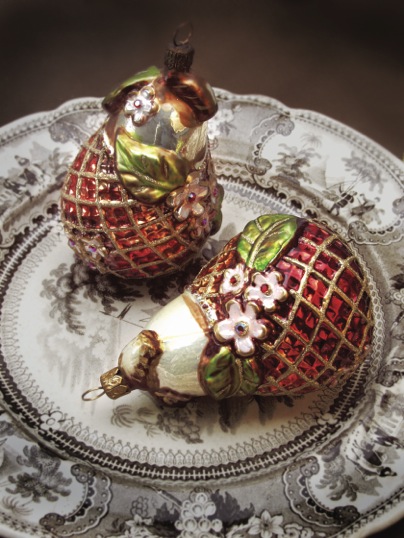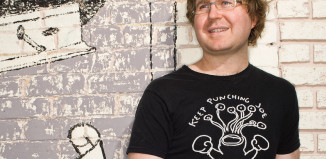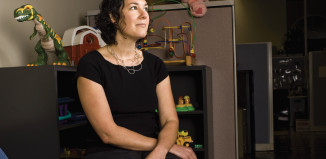Versatile designer John Toole spent over 20 years as one of the country’s top designers of Christmas ornaments. His beautiful, hand-crafted pieces were sold in stores like Saks Fifth Avenue and Neiman Marcus, and he counts Martha Stewart, Home Depot, Macy’s, Neiman Marcus, Anthropologie, and Frontgate among his clients.
After the economic crisis, Toole refocused his career. Today, he’s taking what he learned in his early career and years designing ornaments to create something new in residential design. Now heading up a unique concierge service assisting Austin homeowners, Toole sees the space for a good designer in this town and is looking to make a name for himself. Toole, a native of McKinney, Texas, gained his MFA in interior design from the University of North Texas before launching his wide-ranging design career. In this interview, he discusses the many different hats he’s worn over the course of his life and what keeps him striving for new and different achievements.
You have had such a diverse career. How would you describe your work?
The bulk of my career was product development, specifically the Christmas industry, which included design work for some of the largest Christmas importers of the time. Eventually I had my own collection until 2008, during the economic “shuffling”. It was then that I went to work for Martha Stewart.
It came to a point where I had to decide between working for a large company or change my direction in life, so that’s what I’ve decided to do. I’ve had to go back to what I know and what I’m good at and see if I can make a go at it.

Photo courtesy of John Toole
What prompted you to branch out into Christmas ornaments?
The Christmas ornaments were actually prompted by the fact that the interior design industry is so crazy. I had been working for some really talented but… dramatic… interior design firms, so I thought, “Well, this is for the birds.” I’d say residential interior design is 80 percent therapy — there’s a lot of emotions tied up with people’s homes. I decided that I needed to find something else to do. And the ornament thing kept me fed and housed for over 20 years, 25 by the time I found myself at Martha Stewart. But I’m ready to be somebody new.
Describe the ornaments. Where did you draw inspiration?
The tagline for the collection was “jewelry for the tree,” and that came from the fact that I spent a lot of time looking at old jewelry or objects, like famous gifts to royalty or wealthy people. They did a lot of exchanging of elaborate gifts back in the day, a lot of jewelry and tiaras — things were a lot more elaborate 100 years ago. So, a lot of the things I designed came directly from translating old jewelry or old objects, like carousel horses or patterns from ancient fabrics. For instance, one of the most popular ornaments was based on a gift to a tsar, a jeweled bird. I did a lot of research and kept it a little bit as our theme. As it evolved, they became much more complicated, much more expensive, all made in Europe, all Old World techniques, mouth blown, hand painted, highly detailed, and I quickly became one of the better-known designers in the country.
Do you have any advice for people decorating for the holidays?
Not so much. The first year that I was designing I met the Home Depot people and they asked me, “What are the new colors for Christmas?” and I said, “Red and green.” [laughs] They kind of chuckled, because that’s what sells! You can certainly go outside the formula, but the trend really is that there is no trend anymore: you can do whatever you want.
How does a designer decorate in his own home for Christmas?
That is something I haven’t done in 25 years. For example, when I was putting out the Christmas ornament collection, Christmas was our busiest time. And now that I’m a designer, I’m in the middle of Christmas designing for clients, getting trees finalized. We also do installations, so I put it all up and in a couple of weeks take it all down. So my house is covered in glitter and Christmas ornaments, it fills up with other people’s things, but not my own.

Photo courtesy of John Toole
How have you staked out a place for yourself in the local design scene?
Since getting out of the retail industry, I’ve started a concierge business where I help people in all areas of their residential life. What I do for my biggest clients is somewhere between interior design and a concierge service, whether a light bulb is out, they need a new rug, or they need the kitchen redone: basically anything anyone wants. Whether it’s finding a chef or repairing something at their house or finding a day care for their dogs, it’s pretty all-encompassing.
I also do a lot of interior work cleaning up after other people’s mistakes. Right now people call me in when they’ve already spent their money on other people. It’s tough, because you’re in a position where they’ve already spent their money, they’re unhappy, they’re wary, so it’s hard when mistakes have been made and you’re trying to work with them.
Your career has so many different aspects. What motivates you to tackle so many different things?
I’m interested in a lot of different things. I still do product design for independent people here and there, and I still do small unusual design projects that come to me — it makes it more interesting!
 How important is staging a house when you are preparing to sell? Does it matter in this hot real estate market?
How important is staging a house when you are preparing to sell? Does it matter in this hot real estate market?
Right now, staging isn’t the majority of my work. But people don’t understand — if you’re going to sell your property, even in a hot market like Austin has been for years, people think, “I don’t have to do anything because I’m going to sell my house.” But in reality, if you have a house everybody wants, you’re going to get a higher price. So it’s always the case whether it’s a bad market or a good one, you always benefit by having your house be the most competitive. Staging or repairs and design items are really integral to having a competitive house.
What attracted you to design in the first place?
Interior design is my first love, and it’s also one of the most difficult things for me. When it’s your passion, maybe it’s always the most difficult, because it’s something you’re attached to. I have a degree in interior design and worked for several top interior designers in Washington, D.C., in my early career, and did lots of trade shows and residences and always kept up with that through the years because it’s something I loved, kind of a hobby.
How has your sexual orientation affected your career?
Things have changed a lot. I grew up in a small town north of Dallas: it was a country town, an intolerant place for someone to grow up, and I was pegged early. I came out my senior year in college, and I think one thing about choosing interior design as a profession is it would have been a safe haven of sorts, and then having my own business would allow me to always be out — I could never feel like someone was judging me or holding it over my head.
It was a conscious choice: Everyone that I work with knows I’m gay, my clients all knew. And when you get into the creative fields, I think that actually being gay is sort of a plus, because people assume you’ll be more creative, and being a gay male has a certain historical stereotype attached to it that’s beneficial. I think being a straight interior designer would have been harder! So it was something I always promoted as a strength. And in working life, in the creative industries, I’ve never come across a downside for it, which is amazing. I know people in other industries who are my age who have to hide their orientation, until recently perhaps, so I feel fortunate.
How do you balance your career with having a life?
I really enjoy working as much as I enjoy going to a movie. I enjoy being productive and feeling needed. I’m thankful for my clients — they give me a sense of purpose. They may have the ability to do great things in their own field, but I can help them when they can’t pick out a pillow for their sofa. So we all have to fill in each other’s strengths, fill the void. The compromise is not knowing where your next job will come from, but at the same time it’s a surprise.
Interview by Janet Jay





































